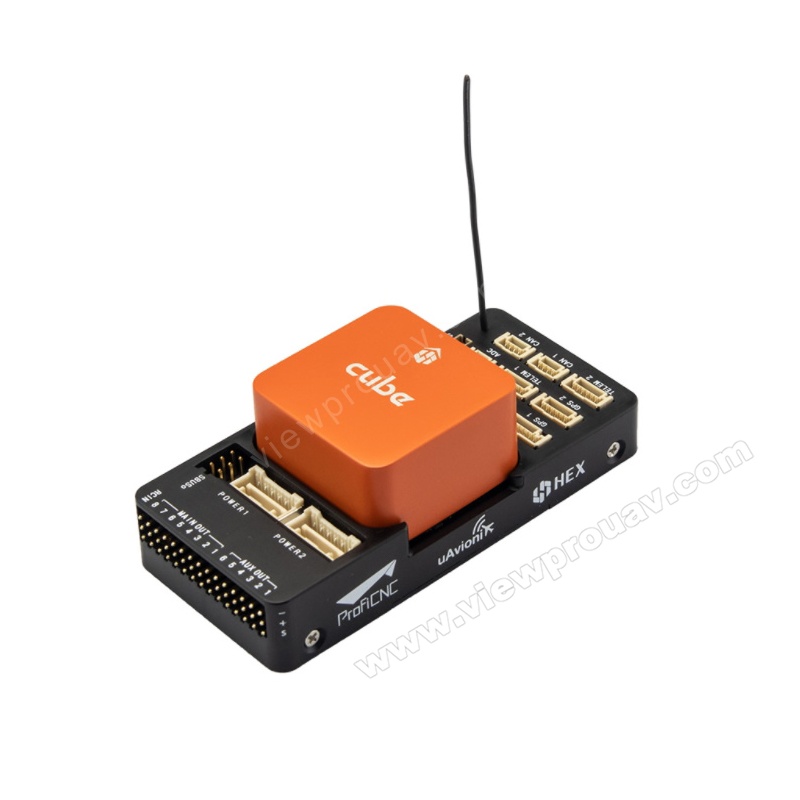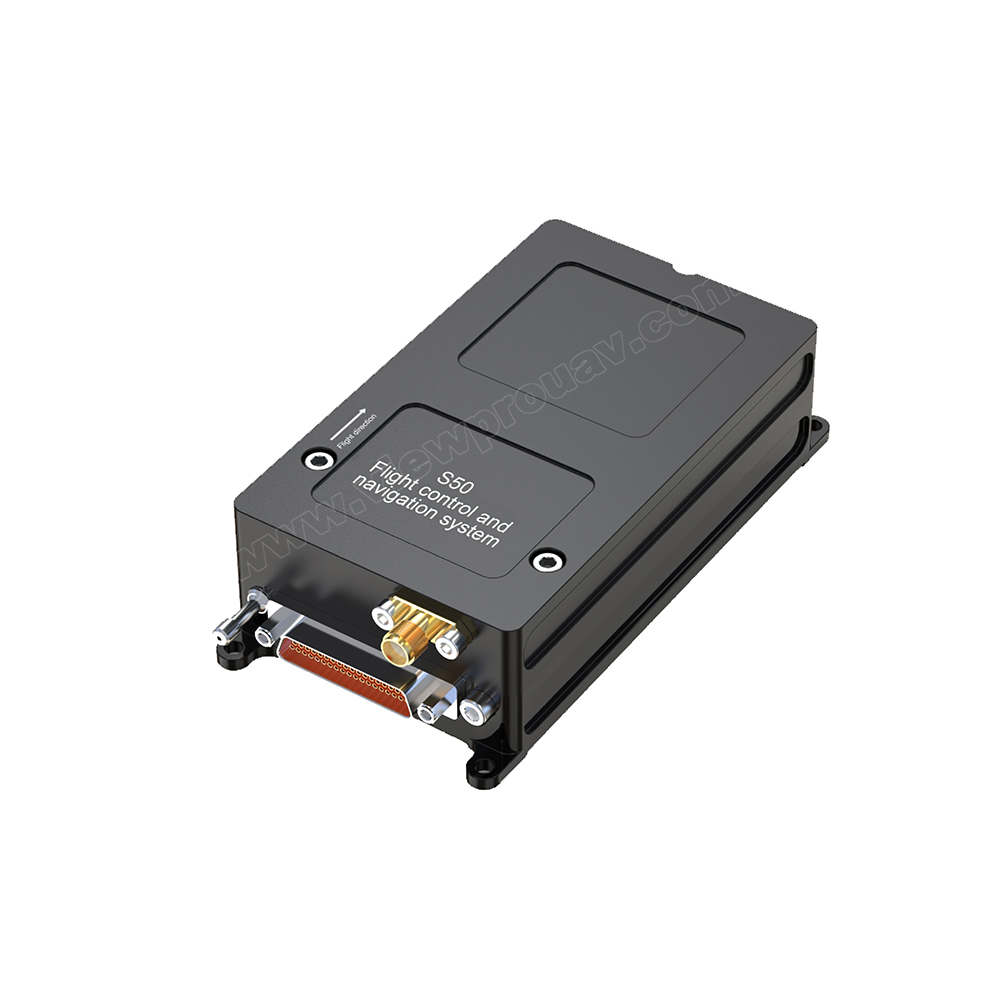Why Pick SparkNavi Drone Flight Controller and GNSS/INS Made in Taiwan for Advanced Navigation
Why Pick SparkNavi Drone Flight Controller and GNSS/INS Made in Taiwan for Advanced Navigation
Blog Article
Exploring the Role of Drone Flight Controllers in Enhancing Trip Security and Navigating Performance
The innovation of drone technology has actually significantly increased the importance of flight controllers, which serve as the mind of these aerial lorries. By incorporating real-time data from a variety of sensors, flight controllers improve trip stability and navigation effectiveness, guaranteeing that drones can operate efficiently also in intricate environments.

Comprehending Trip Controllers
Trip controllers are integral parts in the performance of drones, acting as the brains that maintain and handle trip procedures. These innovative devices process data from numerous sensing units, consisting of accelerometers, gyroscopes, and GPS, to ensure that the drone maintains its desired flight path. The flight controller analyzes this information and implements commands based on pre-defined algorithms, enabling the drone to react to ecological modifications, such as wind or challenges.
The main function of a flight controller is to keep stability throughout flight. It achieves this by making real-time modifications to the drone's electric motors and control surface areas, ensuring equilibrium and control. Additionally, modern-day trip controllers incorporate sophisticated features such as waypoint navigating, permitting automated trip paths and boosted operational efficiency.
Recognizing the design of trip controllers is important for both specialists and hobbyists. They generally contain a microcontroller, firmware, and numerous user interfaces for sensor input and interaction. As modern technology advances, trip controllers have actually come to be a lot more compact and qualified, integrating expert system to boost decision-making procedures and adapt to intricate flight scenarios. This evolution represents a pivotal growth in the drone market, paving the means for much more innovative applications and more secure procedures.
Key Elements of Trip Stability
Achieving optimal trip stability in drones depends on numerous key elements that operate in show to make certain controlled and smooth procedures. Central to this security is the trip controller itself, which refines information from numerous sensing units to maintain the wanted flight perspective. This consists of accelerometers and gyroscopes that determine movement and positioning, permitting real-time modifications to the drone's position.
Another important part is the electronic speed controllers (ESCs), which control the power supplied to the motors. By carefully tuning electric motor rates in feedback to trip controller commands, ESCs help keep balance and neutralize disruptions caused by wind or abrupt movements.
Additionally, the style of the drone's frame plays a critical role in flight stability. A well-structured frame reduces resonances and boosts the general aerodynamic profile, contributing to smoother flight characteristics. The combination of sophisticated algorithms within the flight controller aids in predictive adjustments, ensuring a receptive and adaptable trip experience.
Together, these parts develop a natural system that enhances a drone's security, enabling exact maneuvering and boosted efficiency in various flight problems.
Navigation Effectiveness Strategies
Performance in navigation is crucial for enhancing drone operations, specifically in complicated environments. Reliable navigation methods enhance the capability of drones to pass through tough terrains and avoid obstacles, consequently improving operational performance and safety.
One noticeable technique is the execution of sophisticated general practitioners and inertial dimension units (IMUs) that offer exact location monitoring and alignment information. These modern technologies permit drones to calculate optimum trip paths in real-time, taking right into account different variables such as wind conditions and possible barriers.
One more method includes using algorithms for path planning and optimization. Algorithms such as A * and Dijkstra's algorithm can be released to identify the most reliable path while minimizing power intake and flight time. Incorporating device discovering versions can enable drones to adaptively discover from their atmospheres, boosting navigation capacities via experience.

Effect On Autonomous Drones
The combination of advanced navigation strategies has exceptionally changed the capacities of autonomous drones, enabling them to operate with better freedom and precision. SparkNavi drone flight controller and GNSS/INS made in taiwan. These enhancements are largely credited to innovative trip controllers that use real-time information processing and sensing unit fusion, enabling drones to navigate complicated atmospheres effortlessly
The effect on independent drones prolongs past mere navigating; it incorporates boosted obstacle avoidance, boosted stability throughout vibrant problems, and increased objective integrity. By leveraging algorithms that integrate machine learning and expert system, drones can adapt to transforming situations, making informed choices that maximize their flight paths while reducing threats.
Furthermore, the execution of durable flight controllers has actually promoted the execution of complicated tasks, such as aerial assessments, distribution services, and farming tracking, with very little human treatment. This capability not just simplifies procedures but likewise reduces human mistake, thus enhancing total security.
As a result, the operational scope of self-governing drones has expanded dramatically, making them vital tools in various sectors. Their ability to carry out efficiently in varied situations underscores the critical duty that advanced trip controllers play in forming the future of unmanned aerial systems.
Future Trends in Flight Control
Frequently, improvements in flight control technology are poised to redefine the landscape of drone procedures in the coming years. click resources Emerging trends indicate a substantial shift in the direction of enhanced fabricated knowledge (AI) assimilation, enabling flight controllers to process real-time information a lot more successfully. This evolution will certainly promote enhanced decision-making abilities, allowing drones to adjust to vibrant ecological conditions autonomously.
Moreover, the implementation of artificial intelligence formulas is expected to enhance predictive maintenance, consequently lessening downtime and prolonging the lifecycle of drone parts. This positive technique to maintenance will certainly be vital as drone applications expand across numerous markets, from farming to logistics.

.png)
Finally, improvements in protected interaction procedures will certainly resolve security and regulative issues, making certain that drones can run flawlessly in stuffed airspaces (SparkNavi drone flight controller and GNSS/INS made in taiwan). Jointly, these trends direct in the direction of a future where trip control systems are not only smarter and more also qualified but effective of operating safely in an increasingly incorporated airspace
Conclusion
To conclude, drone trip controllers are redirected here important to boosting flight stability and navigating effectiveness via the sophisticated handling of sensor information. By preserving optimal flight mindsets and utilizing innovative algorithms for path optimization and challenge avoidance, these controllers dramatically contribute to the freedom and functional safety and security of drones. As innovation remains to progress, further improvements in trip control systems are anticipated, assuring enhanced performance and broadened capacities in the world of unmanned airborne cars.
By incorporating real-time information from a variety of sensing units, flight controllers improve flight security and navigating efficiency, ensuring that drones can run efficiently also in complicated environments.Flight controllers are essential components in the functioning of drones, serving as the minds that stabilize and take care of trip operations. In addition, modern-day trip controllers integrate innovative features such as waypoint navigation, permitting for automated flight paths and enhanced functional efficiency.
Central to this security is the trip controller itself, which refines information from numerous sensors to preserve the wanted trip perspective.In conclusion, drone visit the site flight controllers are important to enhancing trip stability and navigation effectiveness via the innovative handling of sensing unit information.
Report this page